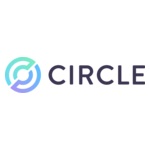Q&A: Andrew McKibben, Bank of America – resilience, automation tech & connected banking
Andrew McKibben, international head of technology and operations (non-US) and head of global corporate and investment banking technology at Bank of America (BofA), believes operational resilience will be a key theme for this decade.
In this Q&A with FinTech Futures, he discusses automation technology in an increasingly interconnected tech landscape; the changing relationship between fintechs and banks; and much else besides.

Andrew McKibben, BofA: “We spend almost $11bn a year on technology, with $3.8bn of that allocated to new projects”
The London-based Northern Irishman joined the bank in 2006 in Singapore after formerly working for Dresdner Kleinwort Wasserstein for six years. McKibben has held a number of finance and risk technology positions during his 20+ year long career and is a passionate advocate of STEM (Science, Technology Engineering and Math) at all educational levels.
What is the scope of BofA’s tech investment and philosophy?
BofA has a large number of tech systems at the bank to support our diverse clients. This is one of the many reasons why we spend almost $11 billion a year on technology, with $3.8 billion of that allocated to new projects. We filed a record number of 2022 patents as well, with 608 registered last year by the US Patent and Trademark Office, a 19% rise year-on-year.
Key automation technologies such as artificial intelligence (AI) and particularly machine learning (ML) applications were to the fore, alongside information security and payment end uses.
Our IT spend also reflects the increased need for, and regulatory focus on, operational resilience, which is a key ongoing theme. It’s a continuing priority to ensure the stability, resilience and security of our tech platforms, so that we can support clients through periods of heightened volume and volatility. We cannot always predict these periods. But we need to be ready and to make sure our employees have the required technology to deliver for our end use clients.
How is automation technology used in the industry and by you?
Automation tech is used in multiple financial services areas by BofA. For example, it can help onboard new clients faster, and to assist the speed and data-rich fast delivery of financial market information, services and execution tools.
Banking is a trust business and it’s important that automation technology is both customer and process led. You have to really understand a business process and tie it back to what the client need is – and ensure the benefit you’re delivering to them, or to staff, is tangible and real. That is the development pathway we follow at the bank.
For example, if you automate ten parts of a procedure it might not optimise it – if it really should only contain three elements in the first place.
Having a diverse team to build, test and use automation technology is also paramount. Diversity produces the best outcomes. The value we deliver as a company is strengthened when we bring broad perspectives together to meet the needs of our diverse stakeholders.
You mean people, process and technology must be aligned?
Exactly. People, process and technology – whether automation is the end aim or not – must be aligned. You cannot change one without the other. Redesigning the workflow in collaboration with teammates and experts who really understand it before deploying the technology is what leads to good outcomes and wise, efficient investments. You shouldn’t only be tech-led.
Tell us about one of BofA’s specific end uses for these key technologies
We deployed a new one-stop-shop financial markets platform last year called Glass. It consolidates market data across all asset classes and regions, and integrates the data with in-house models, machine learning techniques and visualisation capabilities to create a one stop shop for market insight.
Using millions of calculations around the clock, Glass helps sales and trading teams uncover hidden market patterns, gain forward-looking insights, and implement systematic strategies. It has enabled us to leverage data-driven insights to best anticipate client needs and provide them with optimum liquidity – and the most suitable products at critical times. This helps our clients to better navigate market volatility, manage risk and reduce their transaction costs.
How has the relationship between fintechs and banks changed over the last decade: competitors or partners?
There are lots of fintech firms in London, UK, where I’m based, and indeed globally. But the relationship is far more collaborative than ten or 20 years ago. We can learn from each other.
Global banks can help with scale, client base, resources and knowledge, and fintechs have the ability to solely focus on their chosen field of technology.
Co-operation, not competition, is therefore definitely the common approach nowadays. An example is Pay by Bank, which was created with UK fintech, Banked.
This BofA badged payment solution lets customers of e-commerce firms, initially in the UK, pay directly from their bank account. Pay by Bank transactions, which are based on the concept of open banking and APIs, take place in real-time [over domestic instant payment rails] and require no credit or debit card details. This makes online checkouts simpler, faster and more secure.
How do you see this collaborative bank and fintech sector evolving?
It will be a never-ending evolution loop. In financial services, as more people require more sophisticated services and the overall scale of it continues, there’s more collaboration needed between tech firms and banks.
Collaboration brings creativity, new ideas and initiatives. Through discussion, mentoring and advice, we can help these young companies take the next steps of their journey. And we’re excited to see where this pathway leads.
About the author
Neil Ainger is an experienced freelance business and technology journalist who has worked for CNBC as fintech correspondent and many others, after a career as an editor covering corporate treasury at AFP; banking via Banking Technology and Daily News at Sibos; as an analyst for IDC; and more. Further details via neilainger.com and @Neil_Ainger.











































